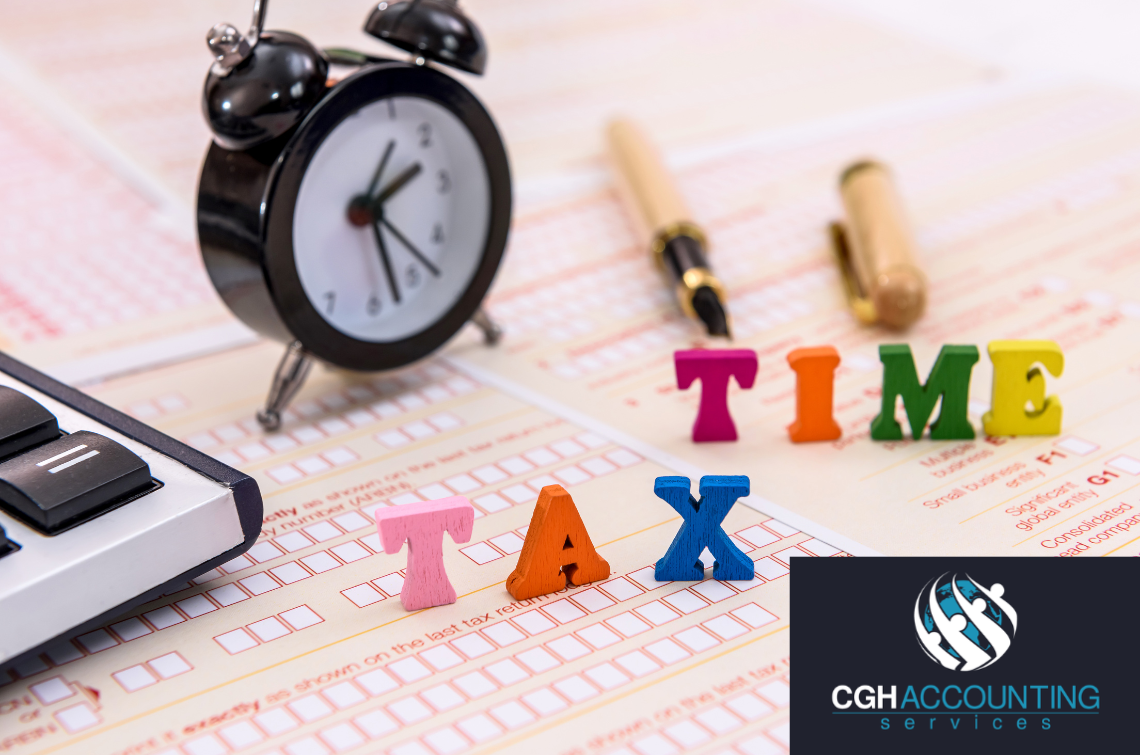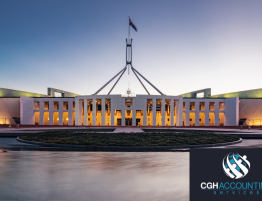
Critical Aspects Of The 2023 Federal Budget, How They Affect You
The Treasurer, Jim Chalmers, handed down his Federal Budget for the new financial year on Tuesday, 9 May 2023. Read on to about how to find out how this could affect your next tax return.
Mr Chalmers walked away from the large, blanket tax cutting initiatives of the last Liberal government, such as Temporary Full Expensing (which applied to virtually all businesses) and the Low and Middle Income Tax Offset (which applied to all individual taxpayers with an income of less than $126,000), and instead focused on help which is more targeted and less generous. While the initiatives are likely to be welcomed by those taxpayers who are the target of the tax breaks, they will pass by many, if not most, taxpayers entirely unnoticed.
Cost Of Living Measures
This was a Budget which was relatively light on tax measures, with most of the heavy lifting being done on the spending side with a variety of cost-of-living measures designed to boost incomes for the lowest paid and most vulnerable Australians. In particular, increases in Jobseeker for all claimants, a package of rent assistance for those on low incomes, energy bill relief and a huge boost to Medicare will all be welcome.
But there was no news about the Morrison government’s Stage 3 tax cuts – which remain legislated to come into effect on 1 July 2024 and which will largely benefit the wealthiest. There was no reprieve also for the Low and Middle Income Tax Offset, which expired last year – and leaves millions facing an effective tax increase in the current year of up to $1,500.
Return Of The $20,000 Instant Asset Write Off
Highlights were focused on the small business sector, which sees a return of the old $20,000 instant asset write-off (an immediate tax deduction for all eligible capital assets costing less than $20,000) but at the expense of the existing temporary full expensing regime (an immediate write-off of all eligible capital assets, regardless of amount) which ends on 30 June 2023.
Incentives For SME’s To Encourage Energy Efficiency
In addition, SME’s will get access to a new program to incentivise them to buy energy-efficient fridges, electric cooling systems, batteries and other assets that support electrification and more efficient energy use, in the form of a 20% additional deduction for qualifying assets.
Slim pickings compared to Temporary Full Expensing!
Individuals
Personal Tax Rates unchanged
There are no changes to any personal tax rates or threshold in 2023-24.
Resident rates and thresholds for 2023-24
The 2023-24 tax rates and income thresholds for residents (unchanged since 2021-22) are:
- taxable income up to $18,200 – nil;
- taxable income of $18,201 to $45,000 – 19% of excess over $18,200;
- taxable income of $45,001 to $120,000 – $5,092 plus 32.5% of excess over $45,000;
- taxable income of $120,001 to $180,000 – $29,467 plus 37% of excess over $120,000;
- taxable income of more than $180,001 – $51,667 plus 45% of excess over $180,000
Non-resident tax rates and threshold for 2023-24
For 2023-24, the tax rates for foreign residents (unchanged) are:
- $0 – $120,000 – 32.5%
- $120,001 – $180,000 – 37%
- $180,001+ – 45%
Stage 3: rates and thresholds from 2024-25 onwards
The Budget did not announce any changes to the Stage 3 personal income tax cuts that are set to commence from 1 July 2024.
Under the Stage 3 tax changes from 1 July 2024, as previously legislated, the 32.5% marginal tax rate will be cut to 30% for one big tax bracket between $45,000 and $200,000. This will more closely align the middle tax bracket of the personal income tax system with corporate tax rates. The 37% tax bracket will be entirely abolished at this time.
1 July 2024 There Will Only Be 3 Personal Tax Income Rates
Therefore, from 1 July 2024, there will only be 3 personal income tax rates – 19%, 30% and 45%. From 1 July 2024, taxpayers earning between $45,000 and $200,000 will face a marginal tax rate of 30%. With these changes, around 94% of Australian taxpayers are projected to face a marginal tax rate of 30% or less.
Low and Middle Income Tax Offset: Not Extended!
There was no announcement to extend the LMITO beyond 2021-22 and therefore the LMITO has now ceased.
As a result, low-to-middle income earners may see their tax refunds from July 2023 reduced by between $675 and $1,500 (for incomes up to $90,000 but phasing out up to $126,000).
Medicare low-income thresholds for 2022-23
For the 2022-23 income year, the Medicare levy low-income threshold for singles will be increased to $24,276 (up from $23,365 for 2021-22). For couples with no children, the family income threshold will be increased to $40,939 (up from $39,402 for 2021-22). The additional amount of threshold for each dependent child or student will be increased to $3,760 (up from $3,619).
For single seniors and pensioners eligible for the SAPTO, the Medicare levy low-income threshold will be increased to $38,365 (up from $36,925 for 2021-22). The family threshold for seniors and pensioners will be increased to $53,406 (up from $51,401), plus $3,760 for each dependent child or student.
Small Business
Instant asset write off returns with a $20,000 threshold
The instant asset write-off returns with a $20,000 threshold per asset from 1 July 2023 to 30 June 2024.
Small businesses, i.e., those with aggregated annual turnover of less than $10 million, will be able to immediately deduct the full cost of eligible assets costing less than $20,000 that are first used or installed ready for use between 1 July 2023 and 30 June 2024. The $20,000 threshold will apply on a per asset basis, so small businesses can instantly write off multiple assets.
Assets valued at $20,000 or more (which cannot be immediately deducted) can be placed into the small business simplified depreciation pool and depreciated at 15% in the first income year and 30% each income year thereafter.
The instant asset write-off rules allow for the immediate deduction for the cost of a depreciating asset for small business entities. However, these rules were effectively replaced by temporary full expensing (which effectively allowed for the immediate write off of all eligible capital assets, without a monetary limit) in relation to depreciating assets first held and used or installed ready for use for a taxable purpose, between the 2020 Budget time (6 October 2020) and 30 June 2023. Temporary full expensing therefore ends on 30 June 2023.
New tax incentive for small business to invest in energy-saving technology
The Small Business Energy Incentive will help small and medium sized businesses to invest in their energy transformation.
The bonus tax deduction will provide businesses with an annual turnover of less than $50 million with an additional 20 per cent deduction on spending that supports electrification and more efficient use of energy.
It will help small businesses make investments like electrifying their heating and cooling systems, upgrading to more efficient fridges and induction cooktops, and installing batteries and heat pumps.
Tradies, manufacturers, restaurants, hairdressers, real estate agents and other small businesses are expected to benefit from the move.
However, certain exclusions will apply, such as:
- electric vehicles;
- renewable electricity generation assets;
- capital works; and
- assets that are not connected to the electricity grid and use fossil fuels.
Up to $100,000 of total expenditure will be eligible for the incentive, with the maximum bonus tax deduction being $20,000 per business.
Eligible assets or upgrades will need to be first used or installed ready for use between 1 July 2023 and 30 June 2024.
Small Business Lodgement Penalty Amnesty
A lodgement penalty amnesty program will be provided for small businesses with aggregate turnover of less than $10 million to encourage them to re-engage with the tax system.
The amnesty will remit failure-to-lodge penalties for outstanding tax statements lodged in the period from 1 June 2023 to 31 December 2023 that were originally due during the period from 1 December 2019 to 29 February 2022.
Property Investors
New tax incentives to boost the housing market
The government will introduce tax incentive changes to help increase the supply of housing. The incentives are:
-
- An increase in the depreciation rate (for capital works purposes) from 2.5% to 4% per year for eligible new build-to-rent projects where construction commences after 9 May 2023; and
- A reduction in the rate of withholding tax for eligible fund payments from managed investment trusts (MITs) to foreign residents on income from newly constructed residential build-to-rent properties after 1 July 2024 from 30% to 15%, subject to further consultation on eligibility criteria.
Home Guarantee Scheme to be expanded from 1 July 2023
Eligibility criteria for all elements of the scheme – including the First Home Guarantee, the Regional First Home Buyer Guarantee, and the Family Home Guarantee – will be expanded.
Among the main changes are the following:
- While the three guarantees – the First Home Guarantee, the Regional First Home Buyer Guarantee, and the Family Home Guarantee – are currently limited to Australian citizens, all three guarantees will also become available to eligible borrowers who are Australian Permanent Residents from 1 July 2023.
- There will also be changes to the eligibility criteria to allow previous property owners to enter the schemes. While the Home Guarantee Schemes are currently only available to first home buyers, from 1 July 2023 former property owners will become eligible. However, this will be limited to those who haven’t owned a property in Australia in the last ten years. The change aims to support those who have “fallen out of homeownership”, for example, those who may have experienced financial crisis or relationship breakdown.
- From 1 July 2023, there will be expanded eligibility for joint applications under the First Home Guarantee and the Regional First Home Buyer Guarantee. These shared equity schemes allow eligible first home buyers with a minimum 5 per cent deposit to enter the property market and avoid paying the usual lenders’ mortgage insurance that applies to those with less than a 20 per cent deposit. Instead, the government guarantees the remainder of the missing deposit (up to 15 per cent). Previously, these guarantees were only available to couples (those who are married or in a de facto relationship) or single applicants. However, the criteria will be expanded from 1 July 2023 to enable couples who are not in a relationship – such as friends, siblings, and other family members – to join the scheme.
- There will be changes to the eligibility criteria for the Family Home Guarantee. This scheme currently supports eligible single parents with at least one dependent child to buy a home with as little as a 2 per cent deposit without paying Lenders Mortgage Insurance. The government guarantees a maximum amount of 18 per cent of the value of the property (as assessed by the participating lender). From 1 July, eligible borrowers who are single legal guardians of children such as aunts, uncles and grandparents will become eligible.
Superannuation.
- Super to be paid on employee’s payday…. but not until 1 July 2026
The government will require all employers to pay their employees’ super guarantee at the same time as their salary and wages from 1 July 2026.
Treasury and the ATO will consult with industry and stakeholders on these changes in the second half of 2023. The final design will be considered as part of the 2024-25 Budget.
Super Pensions
No extension to the reduction in minimum drawdowns
There will be no further extension of the temporary 50% reduction in the minimum annual payment amounts for superannuation pensions and annuities.
As a result, the 50% reduction in the minimum pension drawdowns, which has applied for the 2019-20, 2020-21 and 2021-22 and 2022-23 income years, is set to end on 30 June 2023.
Accordingly, superannuation trustees and members will need to start planning for the additional cash flow requirements to satisfy the minimum annual payment amounts for 2023-24 in relation to account-based, allocated and market linked pensions.
We invite you to read our June Tax Time Bulletin here.







